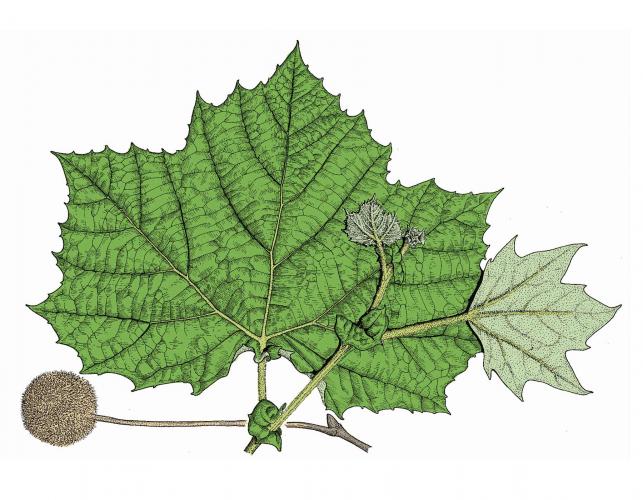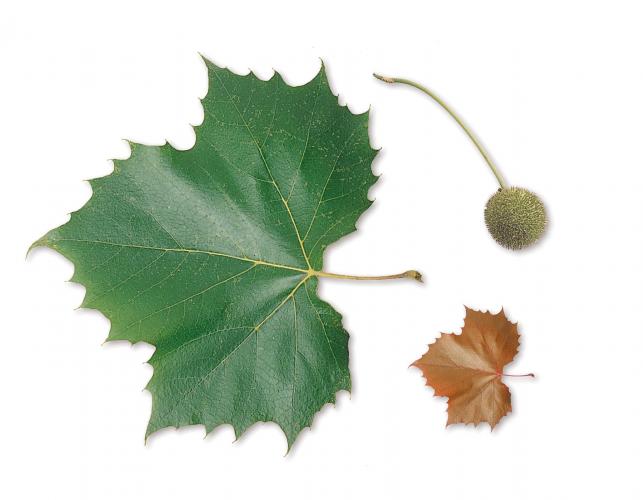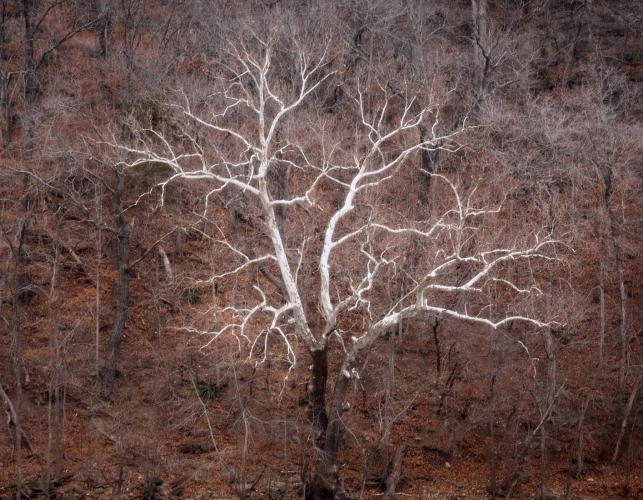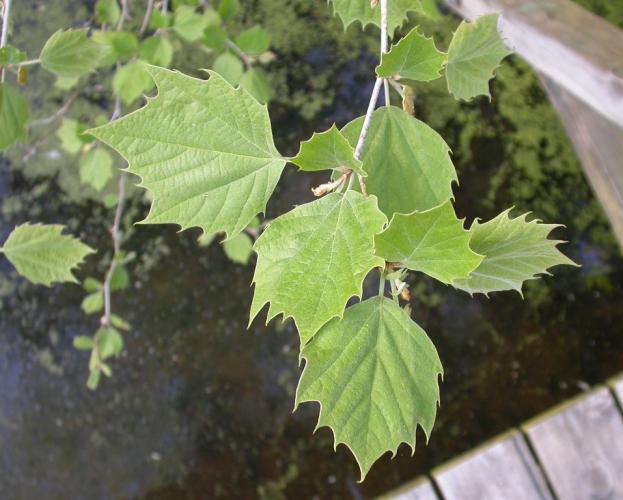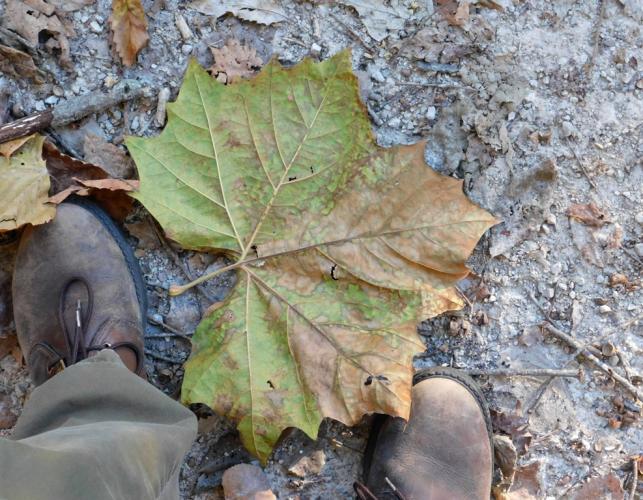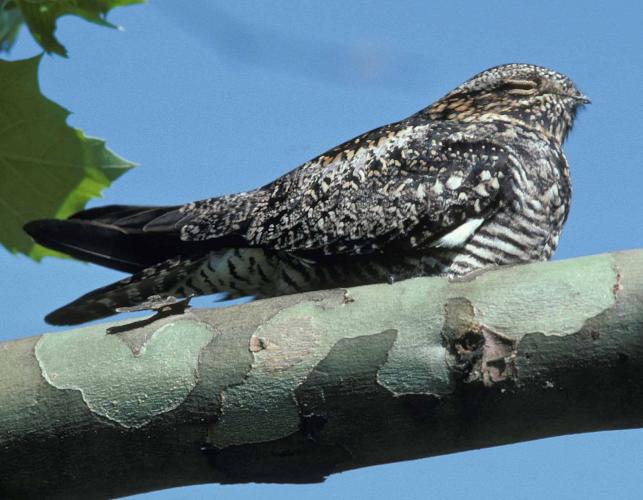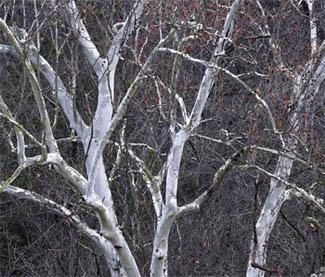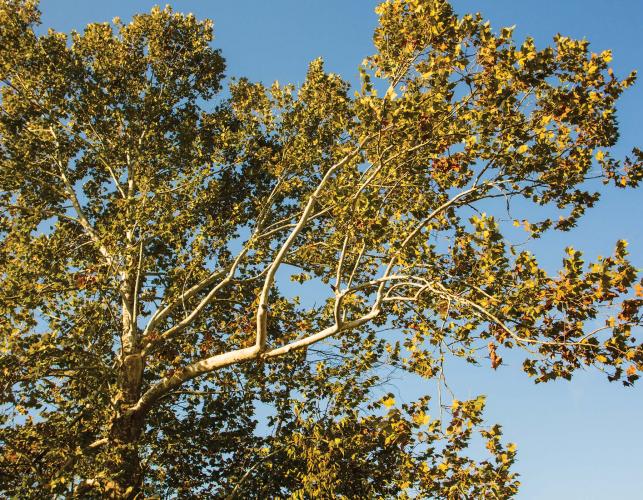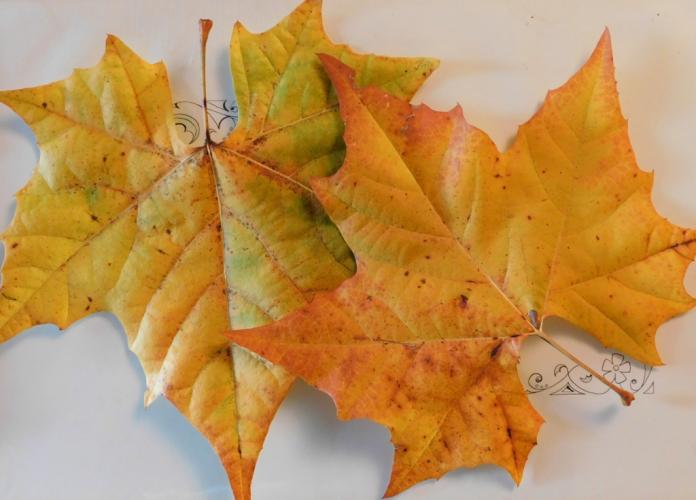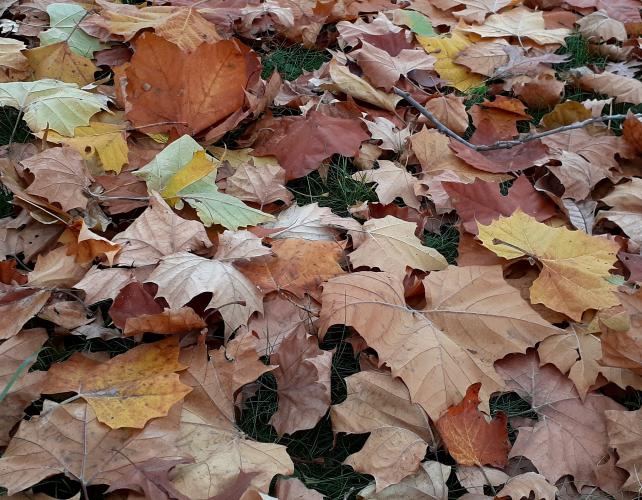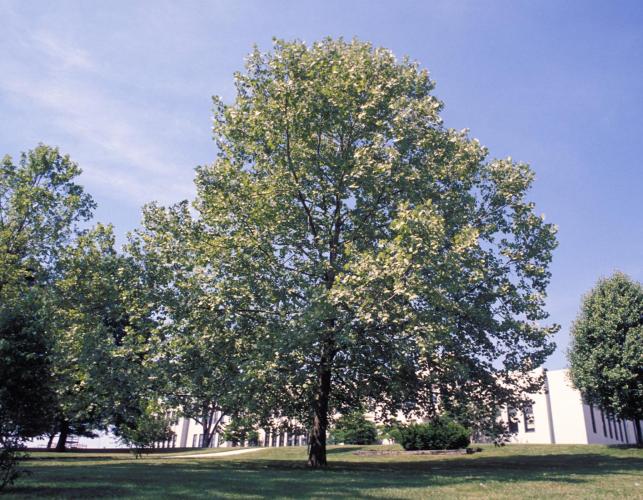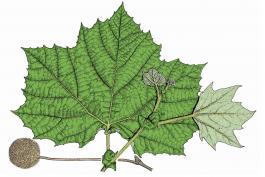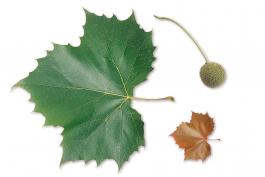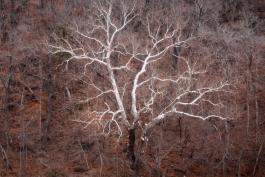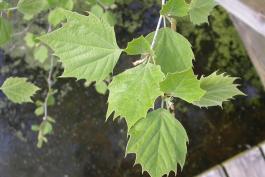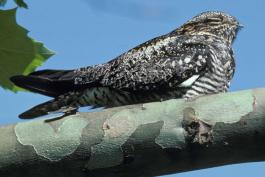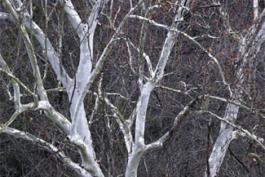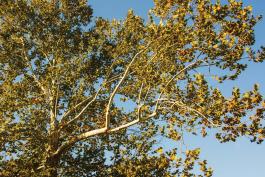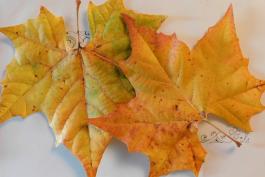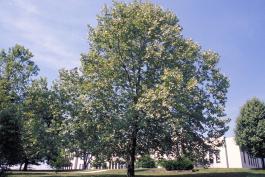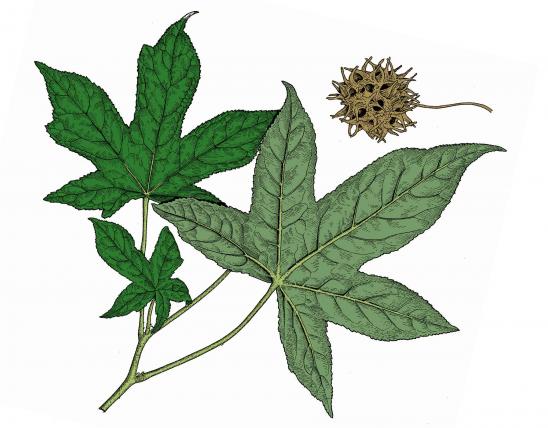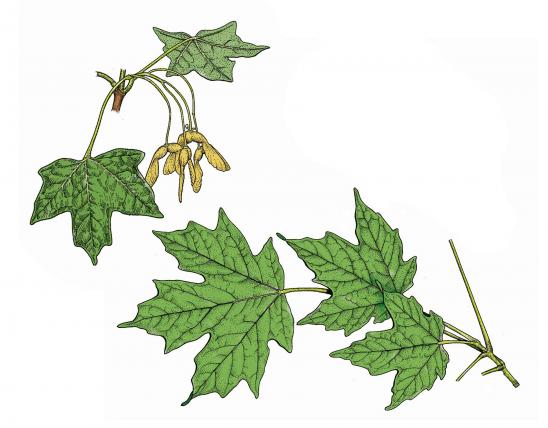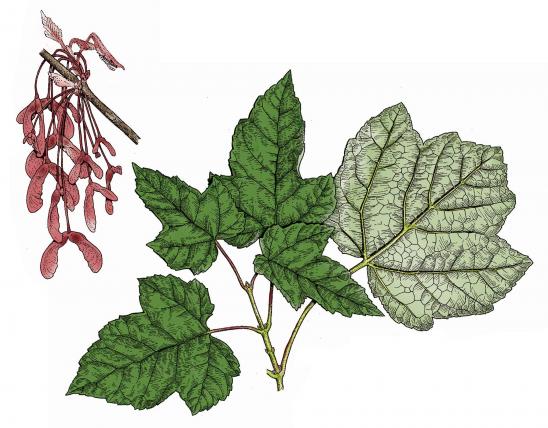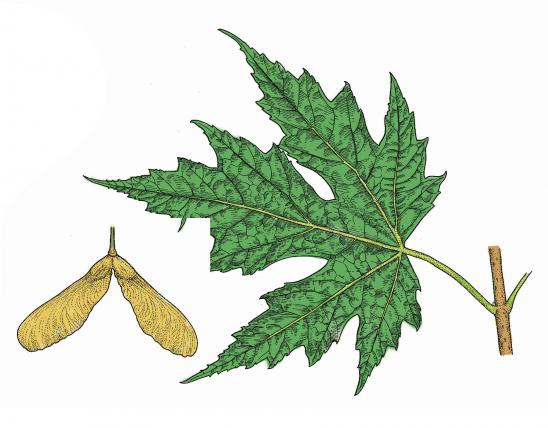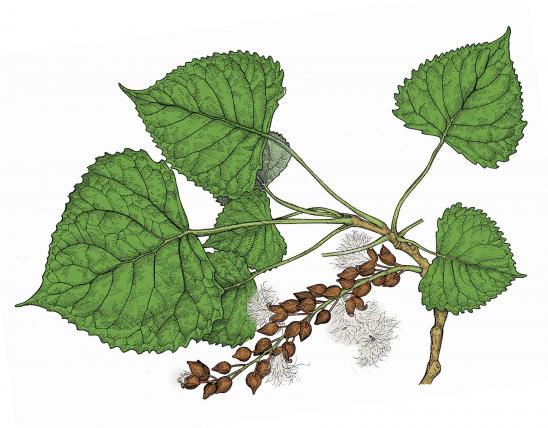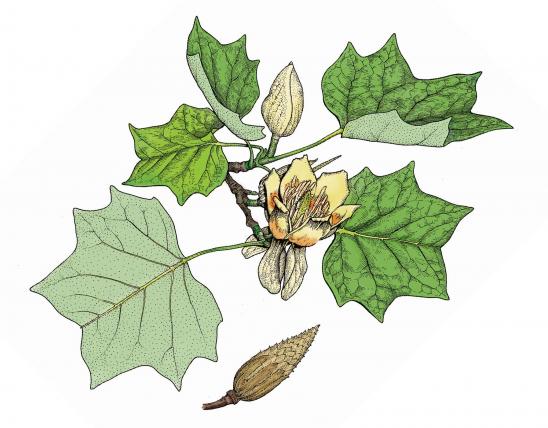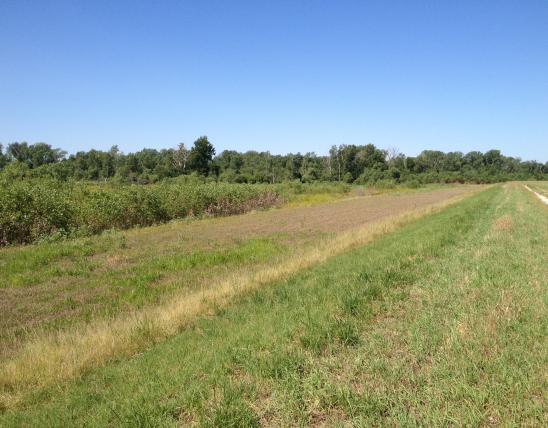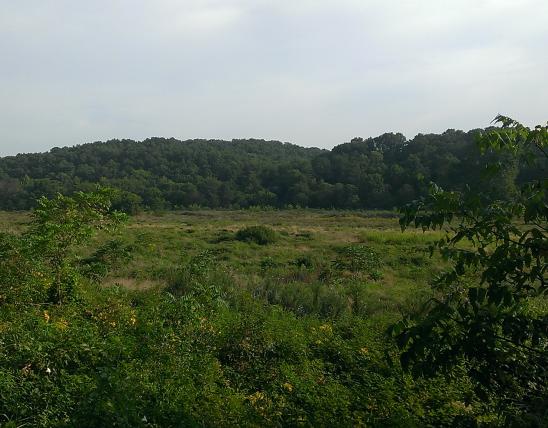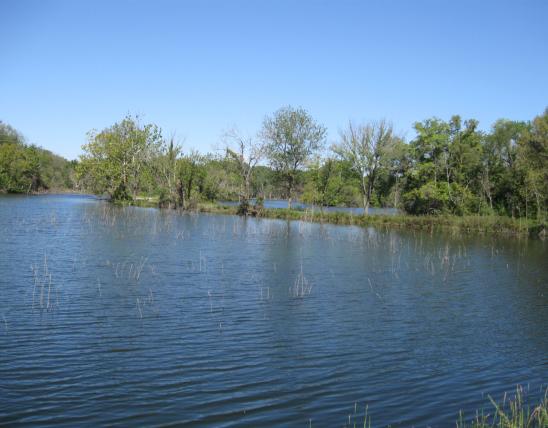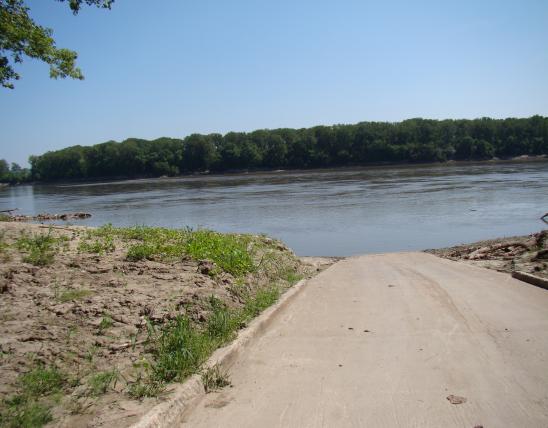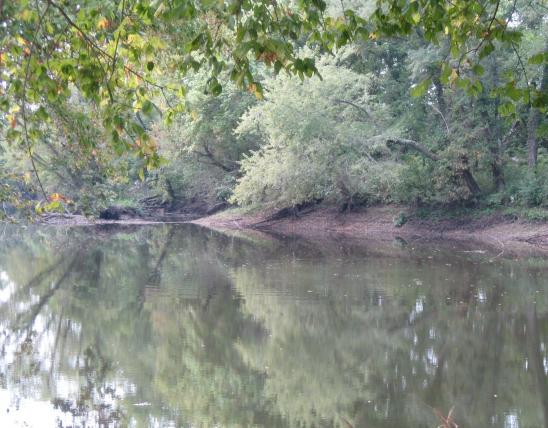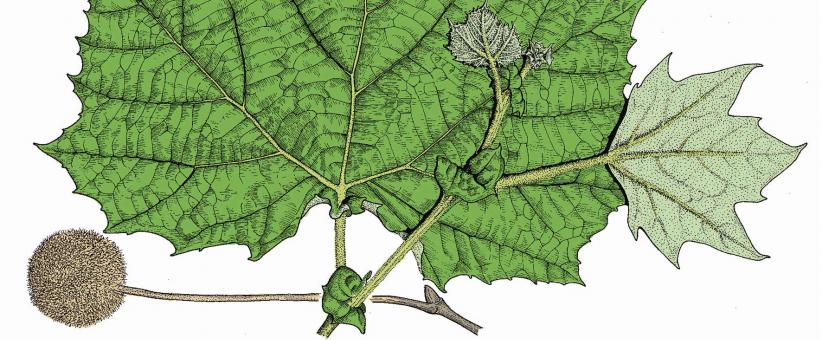
Sycamore is a large tree with a massive trunk, a broad, open, irregular crown, and large, crooked, spreading, white branches.
Leaves are alternate, simple, 4–8 inches long and broad or larger; with 3–5 broad, shallow lobes with coarse teeth, each lobe tip pointed; upper surface bright green; lower surface whitish, hairy; leaf stalk hairy, with a leafy appendage at the base.
Bark is very distinctive: smooth, greenish on young trunks, turning reddish-brown to gray; bark sheds in thin plates to reveal the distinctive white new bark.
Twigs are slender, shiny, zigzag; buds are entirely enclosed by the base of the leaf stalk.
Flowers April–June; male and female flowers on the same tree with numerous flowers in globe-shaped clusters. Male flower cluster red or yellow, about ⅜ inch in diameter; female flower cluster red, about ½ inch in diameter, occurring singly.
Fruits September–October, persist through winter, solitary, rounded, dry, 1–1½ inches wide, drooping on a stalk 3–6 inches long; ball composed of many closely packed, long, narrow fruits.
Similar species: This is Missouri's only native sycamore, but you might have seen some of its relatives, in cultivation or in other states:
- The London plane tree (P. xacerifolia) is a hybrid with an Asian sycamore species, and it has existed since the 1600s. You can identify it by the deeper sinuses in its leaves and by its fruiting balls that occur in pairs (not singly). It tolerates pollution and rootball compaction, and it has long been a popular street tree in North America and Europe. The trees that line the glamorous Champs-Elysées boulevard in Paris, France, are London plane trees that have been pollarded (a particular, careful kind of pruning). In Missouri, you may encounter London plane trees in cultivation (along streets, on college campuses, in parks, and so on).
- There are about 10 sycamore species worldwide, including two in the western United States: if you travel to California, you may see the California sycamore (P. racemosa); if you visit Arizona or New Mexico, the native species is the Arizona sycamore (P. wrightii). Five other sycamore species occur on our continent, south of the US border in Mexico.
Height: to 120 feet.
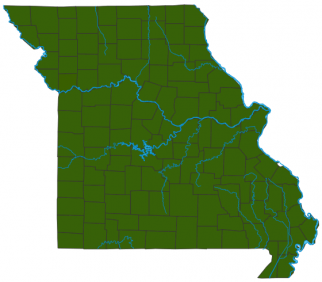
Statewide; often planted in yards, parks, and streetscapes.
Habitat and Conservation
Occurs in valleys either on gravel bars or in low or wet rich bottomland. An integral part of our streamside habitats, sycamore attains the largest size of any deciduous tree in the United States and is often planted in urban areas as an ornamental for its fast growth, impressive stature, and unusual bark. It is a pioneer species in old fields.
Human Connections
Sycamore is a popular large tree for landscaping, though many object to the large leaves, fruit balls, and small branches it drops. In cities, sycamores create some of the most beautiful streetscapes in the world. Witness the London plane tree hybrid that lines the great boulevards in many European cities.
Sycamore is also used for its wood, which becomes crates, interior finishing, and furniture. It used to be used for more things than it is today ― barbershop poles, for instance. Difficult to split, it is used for butcher blocks and buttons, hence the common name “buttonwood.”
Before widespread settlement in North America, explorers reported sycamores as much as 47 feet in circumference (measured 4 feet above ground) ― which is nearly 15 feet in diameter. (For comparison, Missouri's current champion sycamore is approximately 19 feet in circumference.) Many of the largest sycamores, over 100 years old, are hollow, and pioneers found they could shelter livestock, including a horse or a cow, within a hollow sycamore. Sometimes an entire pioneer family, prior to building a cabin, sheltered temporarily within a gigantic sycamore. Early settlers used short sections of trunk, with a hole drilled in the center, as crude wheels for ox carts. They also used 3- to 4-foot sections of hollow sycamore trunks (adding a wooden bottom) as storage bins for grain.
Ecosystem Connections
The seeds are an important late winter food source for finches and were once a favorite food of the now-extinct Carolina parakeet.
Trunk cavities provide shelter for mammals and for nesting swifts and swallows. In fact, long before European settlers started building cabins in America, chimney swifts relied a great deal on hollow sycamore trunks. Audubon described witnessing "thousands" of these birds "pouring" in and out of a single huge hollow sycamore trunk in a "black continued stream."
In Missouri, great blue herons nearly always nest in sycamores. Bald eagles often nest in them, too.
The sycamore lace bug (Corythucha ciliata) is the only lace bug found on sycamore trees; these tiny grayish-white insects live on the undersides of leaves and drink sap from the leaves much as aphids do. Usually their damage is only aesthetic and nothing to worry about, but during droughts or severe infestations of weakened trees, trees may drop all their leaves. In some cases, trees have died. The sycamore lace bug has traveled to Europe, where it has spread widely and now feasts on the large plantings of sycamores along streets, annoying the patrons at chic sidewalk cafés.
